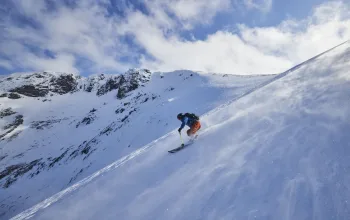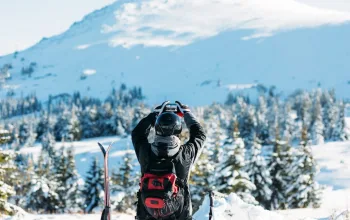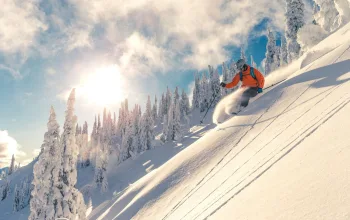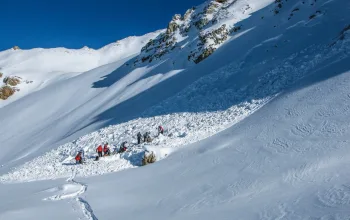Shell or insulated?
A shell jacket or pants will be lightweight and less bulky but won't provide much in the way of insulation, so on colder days in particular you'll need to layer up underneath.
Insulated jackets and pants will obviously keep you warmer but will be heavier and bulkier; of course you can always wear fewer layers underneath but you may find, especially on warm spring days, that insulated outer layers are simply too warm.
What are you using them for?
If you like to cruise the pistes at an easy pace and your skiing is more about relaxing than hammering it then insulated jackets and pants are likely to be your best bet; if you're freeriding, ski touring or just going hard on the pistes then shell jacket and pants may be better as they will cope more efficiently with the demands of high energy skiing - especially in the warmer temperatures of Easter.
The best ski jackets for under £300
10 of the best ski jackets 2016-17
Waterproofing
The higher the jacket's 'hydrostatic head' the more resistant to precipitation it will be. This info should be available on the garment's swing tag and will be written as 'mm H2O' - 20,000mm H2O is a good figure to look for.
Breathability
Your outer layer also needs to be breathable, the more so if you're working up a sweat freeriding or touring. Look for the jacket's 'Moisture Vapour Permeability' rating, which should be around 20,000/m2/24hrs.
Seams
This is where moisture is most likely to get into your garment. Laser cut, glued and taped seams are best as, unlike stitching, this doesn't involve putting holes into the fabric.
Features
Water resistant zips are vital, and on a jacket an adjustable, well-fitted helmet-compatible hood is also useful; ventilation zips are great in warmer weather or for more high-energy skiing as they help to regulate your body temperature. Failing this some outer layers will have large pockets with mesh inners which can double up as 'vents'.
Consider a powder skirt on your jacket for the best protection. The advantage of buying pants and jacket of the same brand is that often they can be joined together.
Finally, consider how many pockets you want and whether those on the jacket would be accessible if you plan to wear a pack.
















